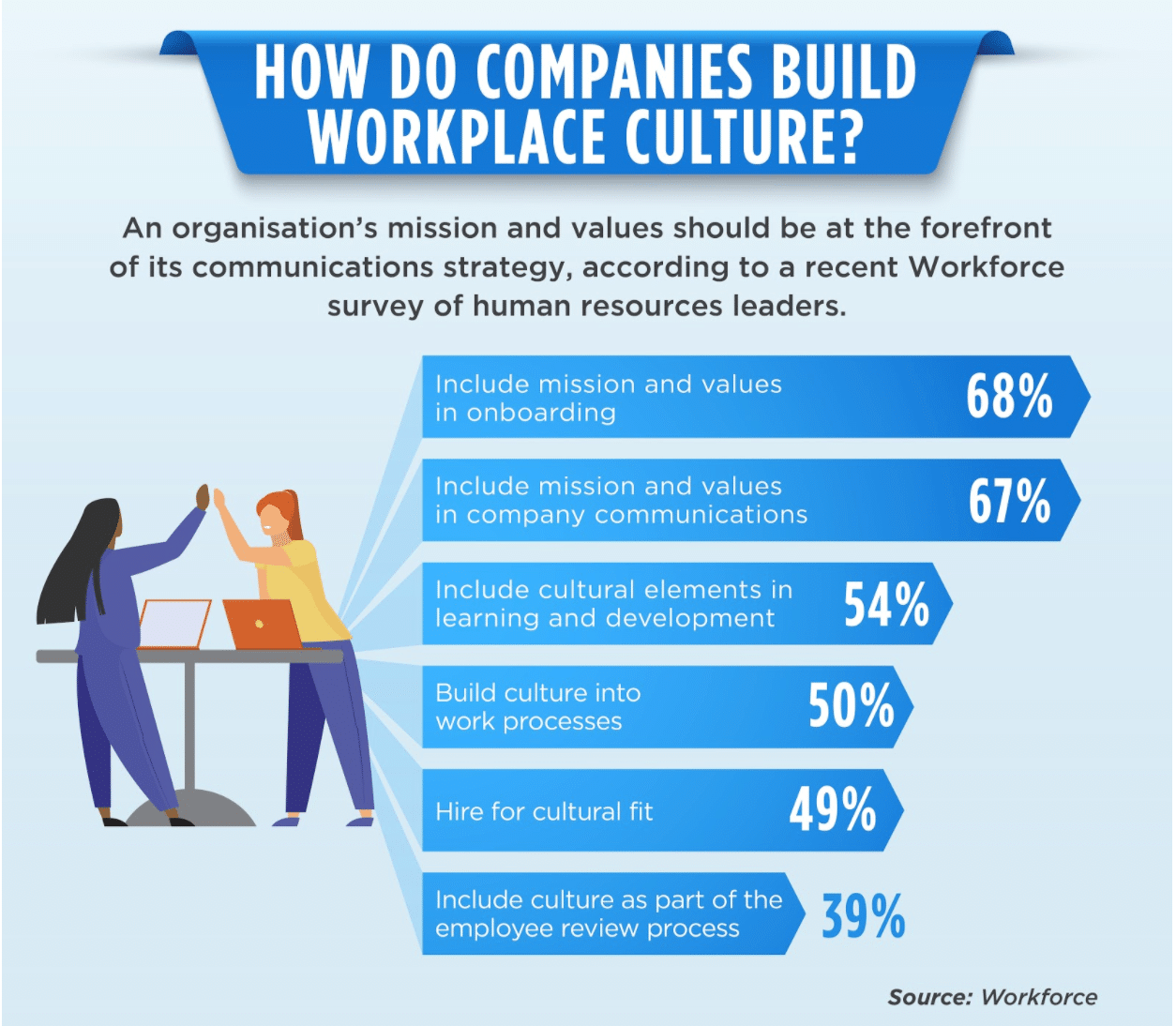In our age of remote working, nurturing a collaborative culture in the workplace has become more important than ever before. COVID only heightened the world’s awareness of this fact even more. With more and more employees working remotely, from anywhere, having a strong collaborative culture can help organizations transform.
Highly collaborative businesses with robust organizational cultures know this already. When businesses value the importance of collaboration, they can maximize employee knowledge, workflows, creativity, and efficiency. By removing common roadblocks to communication, ideas are shared and communicated more freely and cross-departmentally.
Companies will find that they start to maximize knowledge sharing and have diverse pools of ideas from which to draw upon. And, well, that means high-performing teams who deliver at the end of the month.
You might be wondering if team performance is so high, why aren’t more offices prioritizing a working environment to match?
And to that, we say, excellent question.
The truth is, many of us like the idea of collaboration but don’t know how to achieve it in practical terms. There’s a huge difference between giving lip service to your company’s culture and actually laying the groundwork for effective practices.
But don’t fret. We’ve put together a guide to fostering a collaborative work culture that actually sticks.

We’ll cover:
- What are the characteristics of a culture of collaboration?
- What stops collaboration?
- How do you create a culture of collaboration in the workplace?
What are the characteristics of a culture of collaboration?
What does a company’s ‘collaborative culture’ actually mean? In essence, what we’re talking about here is the power of the collective intellect.
An actively collaborative workplace culture is one that is always consciously encouraging collaboration on a daily basis in a deliberate and meaningful way.
In other words, it’s about more than happenstance moments of collaboration between colleagues or teams.
It’s about specifically mobilized management systems and processes that build interaction into everyday working life.
Why do organizations need a collaborative work culture?
- Encourages innovation
- Brings out the best in employees
- Maximizes skill-sets
- Creates a united workforce
- Improves employee engagement
- Increases employee retention
- Attracts top talent

What stops collaboration?
There are many reasons why a particular workplace might fall short when it comes to collaboration. A culture of collaborative work isn’t something that transpires at the click of a switch. Take a look at some of these common roadblocks to workplace collaboration.
1. It’s different
Not everyone knows how to work with others or how to function in that kind of workplace. If you’re used to micro-management, it’s unlikely that you’ll come fully-equipped with the vocabulary and behaviors needed to collaborate effectively. Collaboration is often stifled when management and employees are not on the same page.
Likewise, many companies function as silos and are used to an individualist way of working, in which collaboration must be avoided in order to preserve information and stay on top.
2. Insincerity
This is a biggie. Sadly, many companies pay lip service to collaboration but fail to implement it. For collaboration to work, it must be a fundamental principle that informs workplace culture, methodology, and communication.
3. It keeps changing
Finally, collaborative culture keeps evolving. Knowing which methods to implement in order to bring people together can quickly become overwhelming. It’s not enough to just buy new management software and run with it. Collaboration education and deliberate implementation are absolutely crucial.
So, how can we overcome these obstacles and foster collaboration in our places of work?

How do you create a culture of collaboration in the workplace?
Achieving successful workforce collaboration takes work. You’ll need an implementation plan, the right tools for the job, and the right attitude for it to have any chance of working. Everyone from employees to head office need to embrace the ethos of collaboration.
Here are some excellent ways to get started.
1. Use the right collaboration tools
Seems simple right? Creating a collaborative work culture today starts with having the right collaboration tools. Investing in cross-functional communication tools that bring teams together is the first step.
That means collaboration platforms and cloud communications software tools like Glip by RingCentral, which allows in-house or remote teams to message, video, and audio call, and interact from anywhere—and is 100% free by the way.
The right technology promotes team collaboration between departments, and even across organizations.
Since the rise of cloud communications, businesses have been able to improve efficiency, boost productivity, and embrace new communication channels. In fact, research suggests that online collaboration tools and digital workplaces can increase productivity by up to 30%.
Technology is tearing down long-standing obstacles that have previously prevented interaction-heavy cultures from thriving, and making it so much easier to enjoy a more social working environment.
Team members don’t even have to be in the same room, the same office, or even the same country to collaborate. A serious advantage, especially now as we embrace remote workers more than ever before.
In short, technology is the foundation upon which contemporary workplace cultures stand. It offers:
- Instant connections
- Social networks
- Remote collaboration
- Virtual check-ins or brainstorming
- An outlet to celebrate achievement

2. Create opportunities
Once your office is set up with the right technologies, it’s time to create opportunities for all of your team members. Collaboration doesn’t just happen. It’s a habit that needs to be built up over time until it becomes the normal workplace culture.
Even with the best technologies at hand, results will fall short if there are no opportunities to collaborate. Set a clear company objective and aim to give employees tasks that require collaboration, as well as spaces and situations that encourage it.
What is an example of collaboration?
- Teamwork projects
- Intra-departmental focus groups
- Group training
- Team meetings
Remember, not everyone will be used to this type of collaborative environment. Nobody is going to feel comfortable being open if their ideas are immediately shut down. Collaboration-based environments work best by adopting open, non-judgmental communication channels.
In other words, no idea is a bad idea. Every idea is part of the creative process. After all, we’re not going to have our best ideas if we’re feeling judged and dismissed. Try to permeate this positive ethos from the top down. Starting with the bosses themselves. This will leave employees feeling heard and appreciated.
3. Pick your leaders wisely
Make sure company leaders and project management lead by example. They should be modeling collaborative behaviors at the source. You might want to focus on new hires and emerging leaders who already adopt a more open management style. Alternatively, offer a leadership training program to existing senior leaders
If your company executives are invested in social relationships with team members, company culture is more likely to stick around for the long haul. Leaders should prioritize regular interactions, open conversations, periodic feedback, collaborative team projects, and informal reviews.
And HR is another great place to start. Think of HR as the collaboration team. Changing up your Human Resource teams’ practices is a super way to give collaborative culture a boost. Get your HR team to roll-out skills training company-wide, and make a conscious effort to prioritize community building and creation of collaborative spaces.
What’s more, with live messaging, video calling, and other forms of collaboration all possible remotely, it’s never been easier to foster open dialogue in the workplace.

The tools your teams need to collaborate in tomorrow’s workplace.
4. Transparency
This is a final magic ingredient when it comes to any significant workplace adjustment. For a new workplace culture to take root, it’s wise to make it as honest and transparent as possible. To create a sense of community, leadership must encourage employees by following their own advice.
Collaboration thrives when boundaries are crossed between teams, departments, organizations, leaders, and employees. Your employees should know exactly what’s expected, and be united in a common goal.
This way everyone will be more engaged and willing to share ideas openly and constructively. And remember, that means being transparent with failures as well as successes. Building relationships is never easy and it’s no different in the office. Workplace relationship building is best built on trust.
Tear down some walls
How would you describe your own office culture right now? Are you part of collaborative company culture? Is it a collaboration haven or a heads-down and hustle kind of a place?
Creating a culture fit for collaborating can be difficult. Especially if the existing style has been focussed on individual outputs for a long time.
But with transparent leadership, plentiful opportunities, and the right tools in tow, there’s nothing stopping you from creating a collaborative haven that brings teams together very soon.
Updated Jun 20, 2024












